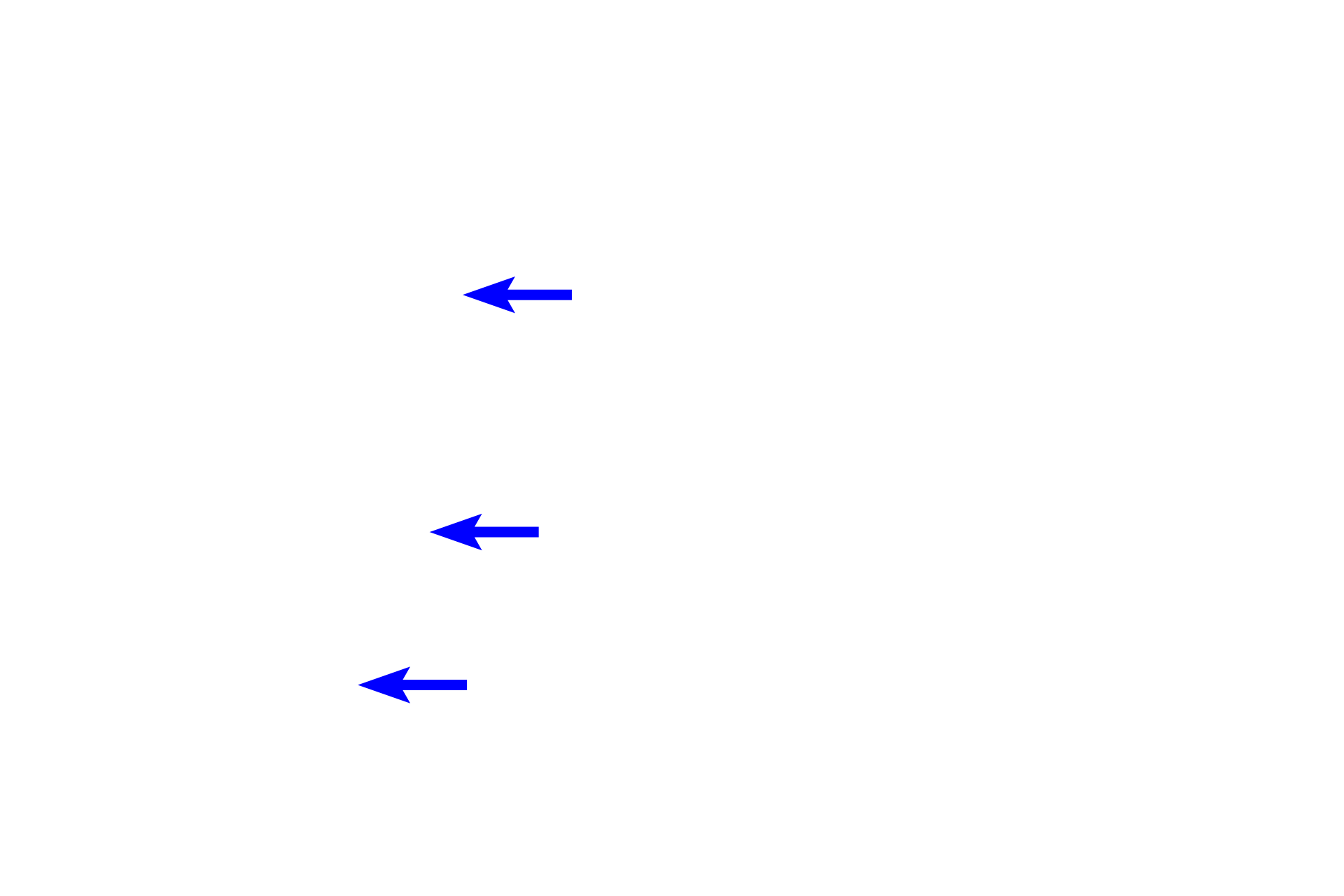
Endochondral ossification
These images show two spicules representing the activity in the zone of ossification (left) and the zone of resorption (right). 400x, 500x.

Zone of ossification >
The blue-staining central cores of the spicules are composed of calcified cartilage formed by the chondrocytes in the epiphyseal plate. These cores form a framework upon which bone is deposited by osteoblasts. The absence of osteoclasts in the endosteum surrounding the spicule indicates that it is located in the zone of ossification.

- Calcified cartilage
The blue-staining central cores of the spicules are composed of calcified cartilage formed by the chondrocytes in the epiphyseal plate. These cores form a framework upon which bone is deposited by osteoblasts. The absence of osteoclasts in the endosteum surrounding the spicule indicates that it is located in the zone of ossification.

- Bone
The blue-staining central cores of the spicules are composed of calcified cartilage formed by the chondrocytes in the epiphyseal plate. These cores form a framework upon which bone is deposited by osteoblasts. The absence of osteoclasts in the endosteum surrounding the spicule indicates that it is located in the zone of ossification.

- Osteoblasts
The blue-staining central cores of the spicules are composed of calcified cartilage formed by the chondrocytes in the epiphyseal plate. These cores form a framework upon which bone is deposited by osteoblasts. The absence of osteoclasts in the endosteum surrounding the spicule indicates that it is located in the zone of ossification.

Zone of resorption >
This spicule demonstrates less calcified cartilage and a higher proportion of bone. The presence of osteoclasts in the endosteum indicates that bone is being broken down and thus this spicule is located in the zone of resorption.

- Calcified cartilage
This spicule demonstrates less calcified cartilage and a higher proportion of bone. The presence of osteoclasts in the endosteum indicates that bone is being broken down and thus this spicule is located in the zone of resorption.

- Bone
This spicule demonstrates less calcified cartilage and a higher proportion of bone. The presence of osteoclasts in the endosteum indicates that bone is being broken down and thus this spicule is located in the zone of resorption.

- Osteoclasts
This spicule demonstrates less calcified cartilage and a higher proportion of bone. The presence of osteoclasts in the endosteum indicates that bone is being broken down and thus this spicule is located in the zone of resorption.

Marrow >
Red marrow fills the spaces between the located spicules. Red marrow contains blood vessels and myeloid (hemopoietic) tissue that produces blood cells.